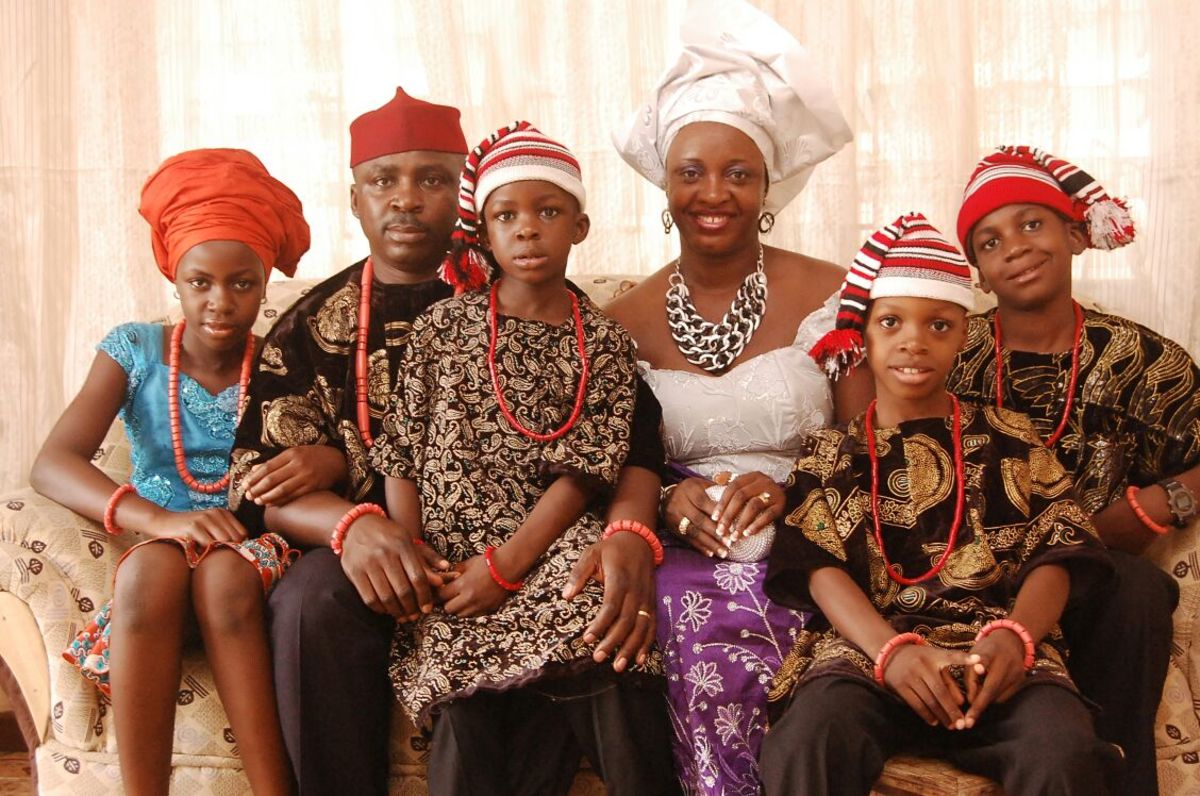IGBO TRADITIONAL ATTIRE
Traditional attire includes garments, jewelries, and accessories rooted in the past that is worn by an identifiable group of people. Though slight changes over time in colour, form, and material.
Traditional attire is a significant part of every culture. Through it, individuals establish their sense of self as well as their place in society. Traditional clothing is an essential part of Igbo people' rich and fascinating cultural heritage.
The ancient Igbo traditional attire consisted of little clothing, as the purpose of clothing originally was simply to conceal private parts, although elders were fully clothed. Children were usually nude from birth till their adolescence (the time when they were considered to have something to hide), but sometimes ornaments such as beads were worn around the waist for spiritual reasons.
There are many facts that are interesting and unique about Igbo men's traditional attire. The most important are: The attire of the royal household, titled holders and chiefs is different from that of the untitled men. The walking stick is a necessary part of the men attire and no traditional Igbo outfit is complete without it. Both men and women wore wrappers. Men would wear loin cloths that wrapped round their waist and between their legs to be fastened at their back, the type of clothing appropriate for the intense heat as well as jobs such as farming. Men could also tie a wrapper over their loin cloth. For public occasions such as traditional weddings, men tie such materials like gorge, which is considered to be expensive, and this usually goes with 'Isiagu' popular for wealthy and traditional title holders. Maidens usually wore a short wrapper with beads around their waist with other ornaments such as necklaces and beads.
THE IGBO ATTIRE
Okpu agụ/ 'okpu Ishi-agu' - “leopard hat” (a sign of bravery/warriors). Woven with white, and red stripes.

Okpu mme – ‘red cap’ the fez caps come from Europe, however, the use of okpu mme is so specific to communities with Nze na Ọzọ associated members. It’s spiritually symbolic, and it’s also known as okpu Ozo / Nze.
Isiagụ also called Chieftaincy, is a, usually, red short-sleeved, knee-length tunic bearing imprints of a tiger’s head. Isiagụ is a mark of achievement. It is usually worn on special events, such as weddings and chieftaincy titles, among others.

Mgba aka, mgba olu, and mgba ụkwụ are beads and bands worn as a wrist or arm band, bracelet, necklace, and ankle lace. Men and women wear mgba aka and others, though the nature and style of the jewelry may be gender-specific. These jewelries include olaedo, cowries, coral beads, ivory (ọdụ).
Mgbájị is a set of waist ornaments, usually coloured beads or pearls. Maidens would wear beads around their necks, wrist and ankles to showcase their beauty. Multiple rings of mgbájị encircle the lower abdomen down to the upper hips.

Mkpọ - is a carved designer walking stick, used by men. The walking stick is a necessary part of the men attire and no traditional Igbo outfit is complete without it. The mkpọ is made of the finest wood, delicately carved and glossed with a layer of varnish.
Uwe-olu - is a male shawl.
Akpa-ụkwụ - is a footwear.
Uli - body art was used to decorate both men and women in the form of lines forming patterns and shapes on the body.
Uwe - designates any garment, in particular a cloth worn over the torso of both genders. Uwe refers to a shirt, specifically.
Ọgọdọ - is the generic term for a wrapper tied around the waist, typically reaching the ankles, though it can be shorter.

With colonialism and the Westernization of Igbo culture, Western styled clothes such as shirts and trousers over took traditional clothing.
References
Igbo Traditional Attire: A metamorphosis of the ancient into the recent. Retrieved from https://iamummsulaim.wordpress.com/2019/10/20/igbo-traditional-attire-a-metamorphosis-of-the-ancient-into-the-recent/
https://en.wikipedia.org/wiki/Igbo_culture#Traditional_attire
 Igbo Language & Culture
Igbo Language & Culture